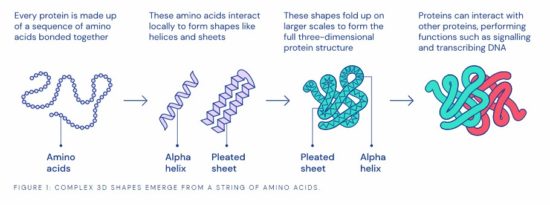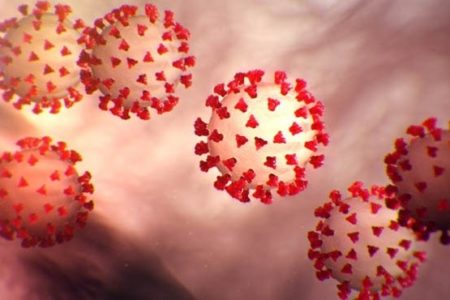March 22, 2020 – When Google acquired British-based DeepMind in 2014 I wonder if the company had studying viruses in mind. One of the keys to finding chinks in the armor of a virus is to study the proteins associated with it and how they are structured. One of the DeepMind tools is AlphaFold, an AI tool that predicts how proteins fold.
Why is this so important?
The way a protein folds determines its function. Proteins are chains of amino acids that fold into intricate shapes. They are encoded by DNA with the genes generating the recipes for how they fold. If they fold just right they execute the tasks for which they were designed. When they don’t there are negative consequences.
Proteins are large and complex molecules responsible for nearly every function in our bodies. Their unique structures have been a puzzle for scientists until recently. And their form and function are critical to how they achieve their roles. A good example of unique sets of folds are antibody proteins used to identify and tag viruses or bacterial invaders. When properly folded these proteins form Y-shaped hooks that latch on to invaders identifying them for the T-cells in their search and destroy missions.
The following illustrations depict how the protein-folding mechanism works.

What is the relationship between proteins and COVID-19?
When a virus like COVID-19 first infects a host it attacks cells and uses the protein-making machinery within them to make copies of its own proteins which then help in viral replication. This commandeering of the cell is the mechanism by which the virus spreads within every infected person.
So what role can AlphaFold play in stopping COVID-19?
Being able to predict how a protein folds can help determine how the virus functions within an infected cell and that knowledge can then be used to devise therapeutical countermeasures to impede the commandeering of the protein-making machinery. What AlphaFold does is predict the protein structure the virus creates in the absence of certainty by other research means. Right now AlphaFold is studying the virus responsible for SARS, a relative of COVID-19. A previous tool developed by DeepMind called the CASP13 system was able to accurately predict that virus’ protein folds and helped virologists and the scientific community to understand how to mount a counterattack.
What is the AI behind AlphaFold?
DeepMind, the creators of AlphaFold, use a neural network AI. Neural networks simulate the interconnected cells of human brains to learn things. to detect patterns in data, and to make decisions similar to the ones we humans make. A neural network is a self-learning AI.
With AlphaFold the neural network has learned to predict a proposed protein structure by looking at millions of examples within the protein landscape. The neural network plays with chains of amino acids to create substructures of its own design rather than an entire protein. It then, over time, makes incremental improvements to the substructures it invents slowly building up a knowledge base of what larger assembled structures should look like. In the end it replicate how proteins fold in nature.
What will the work of AlphaFold finally yield in the fight to defeat COVID-19?
The virus when it enters a healthy cell carries its own encoded protein which interacts with the cell’s protein-making machinery to make more copies. The copying proteins are polymerases, long chains of RNA enzymes. The goal of researchers trying to find a cure for COVID-19 is to block the RNA polymerases so the virus cannot replicate. The challenge is developing a drug that specifically targets the RNA polymerase without harming the host cell.
In both previous coronaviral epidemics, SARS and MERS, attempts to create a safe drug yielded some positive results in laboratory animal studies. Remdesivir, a drug originally developed to fight the Ebola virus, although less effective on it, proved better in laboratory studies treating infected animals.
In February, the National Institutes of Health started a clinical COVID-19 trial using the drug at the University of Nebraska Medical Center in Omaha. Remdesvir has been undergoing clinical trials in China as well. The results from both efforts are pending.








